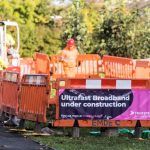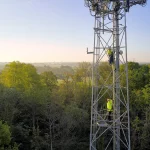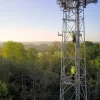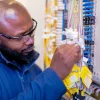Anger as New Gigabit Broadband Vouchers Exclude Some Villages UPDATE

The Government’s new £210m UK Gigabit Voucher scheme, which is due to launch on 8th April 2021 and will help to spread 1Gbps capable broadband into some of the most remote rural areas, is facing somewhat of a backlash from communities that may find some or all of their homes being excluded under the new eligibility criteria.
On the surface the new scheme – part of the £5bn Project Gigabit programme – appears to be an almost identical follow-on replacement for the existing £200m Rural Gigabit Connectivity (RGC) project. Both schemes offer up to £3,500 for businesses, or £1,500 for homes, to help them get an ultrafast or gigabit-capable connection installed.
So far more than 66,000 vouchers, worth up to £127m, have been issued to premises across the UK under the existing voucher scheme, but that one was always planned to end on 31st March 2021. Meanwhile, approvals for a lot of new projects under the RGC have been paused for a few weeks, while awaiting details of the new scheme.
Advertisement
Happily, the Government recently confirmed that there would indeed be a follow-on voucher scheme, and it seemed to match the existing one, but the real problem stems from a key change to eligibility that has occurred under the hood of the new scheme. Put simply, Building Digital UK (DCMS) have narrowed the eligibility criteria so that only those in the remotest areas (e.g. Ofcom’s Area 3) are eligible. This makes sense given the rural focus of Project Gigabit, but it has a cost.
Extract from BDUK Supplier Notice (Feb 2021)
“In line with the Government’s ambition to provide access to better broadband to many more of the hardest-to-reach communities in rural areas across the UK, we are considering that the new voucher would no longer treat premises that are in an Ofcom Area 2 area as eligible to receive voucher funding.
This change would be in order to target the funding at delivery in the hardest to reach areas which are least likely to receive commercial rollout. … This bulletin also provides guidance for existing PRPs [Pre Registered Packages] that do feature Ofcom Area 2 premises and therefore would not be eligible to transfer to the UK Gigabit Programme.
However, over the next few days we will write to all relevant suppliers to give our best indication of the impact of the potential Ofcom Area 2 eligibility change to supplier’s existing projects that have been active in the last 180 days. (An active project is a project that has had at least one voucher requested, issued or claimed within the last 6 months, or has been submitted within the last 6 months). “
We first reported on this change back in February 2021 (here), but at the time it was unclear how much of an impact it would have or whether they would actually adopt it. However, since last week’s Project Gigabit announcement, we’ve received a rising number of complaints from communities that are stuck awaiting project approval under the old scheme (i.e. many of these have a lot, or a majority, of Area 2 premises).
One of several examples is the community scheme for the village of Furnace Wood (c.100 premises) on the Sussex/Surrey border in England, which is now in limbo due to a high quantity of Area 2 premises. The village sits between East Grinstead and Crawley, so it’s not the most isolated of locations and some slower FTTC of varying speeds does exist.
Apparently, Openreach quoted £245,000 to upgrade the village with gigabit FTTP (Community Fibre Partnership) and locals were aiming to help cover this using RGC gigabit vouchers, but due to the Area 2 change they may no longer be eligible for this after 31st March 2021.
Advertisement
James Sherwin-Smith, MD of Fibre4FW Ltd. (Furnace Wood), said:
“The DCMS scheme closes on 31 March, and over 270 communities are currently in a pending state awaiting DCMS approval. If communities do not receive approval by 31 March and the corresponding vouchers issued, communities across the UK will see, by our estimates, over £50M of eligible funding vanish overnight. They may not be able to get access to faster broadband speeds for over a decade.
DCMS is either inept, ill-prepared, or deliberately stalling in an effort to manage its budget – or a combination of all three. Its refusal to allow individual schemes to operate across more than one exchange means that some communities are losing out due to a lack of funding on segments of their projects – resulting in digital apartheid. This is another slap in the face for rural communities struggling with the impact of Covid-19: families struggling to work and educate their children from home, and small and medium enterprises trying to keep their businesses afloat – all on sub-standard internet connections.
Fibre 4 Furnace Wood is eligible to receive £245,000 of funding to support connections for over 100 houses and businesses under the national scheme and additional support from West Sussex County Council. This is not a sum we can raise ourselves, and no supplier is going to be prepared to invest in a rural, marginalised area without such government support. This is a once in lifetime opportunity to improve our national infrastructure, and DCMS appear to be happy to run out the clock. We are not alone – this is happening across rural communities up and down the UK. It’s a national disgrace.”
We cannot vouch for the figure of 270 communities or £50m of funding mentioned above, but we have certainly heard from several others in the same situation. The Fibre4FW project points to a few more, such as ‘Broadband for Slinfold’ in West Sussex and the ‘Froggatt community ultrafast’ project in Derbyshire, although these two seem to be in Area 3 according to Ofcom’s WTFMR spreadsheet and so may be safe.
We have asked DCMS to comment and await their reply, although BDUK have previously been clear that they do intend to honour all vouchers issued before 31st March 2021, but obviously that doesn’t help those with a lot of Area 2 premises who have yet to get their projects approved (i.e. no vouchers issued yet).
The BDUK team are currently still in the process of assuring and approving the voucher projects that they have assessed as most likely to be affected, with the hope that most of the communities currently waiting for approval will be able to continue. But until that process has completed we won’t know what the full impact is going to be.
The situation is tricky for DCMS/BDUK too because they need to minimise, as much as is possible, conflicts between their new voucher scheme and future gap-funded deployment contracts. At the same time there will inevitably be some areas where the Area 2 classification may feel as if it doesn’t suit. Getting this right is an extremely difficult thing to do, especially where communities may be split by different classifications.
Advertisement
The hope is that those in Area 2, who may no longer benefit from vouchers, should still see a future upgrade, either via commercial builds or support from the gap-funded contracts to follow. But we wouldn’t be surprised if that doesn’t happen for everybody in an Area 2 community by the end of 2025.
In the meantime, James at Fibre4FW has begun asking other communities in the same boat to co-sign their statement on the matter (here). One difficulty here is that we don’t yet know the final outcome of BDUK’s ongoing assuring and approving process, without that there will be an element of uncertainty.
UPDATE 10:33pm
A number of events have taken place this afternoon, and they’re all positive, but we’ll start with DCMS’s response to the issue raised above.
A DCMS Spokesperson said:
“These areas will not miss out on gigabit broadband. We will honour all vouchers already issued and areas ineligible under the new voucher scheme are due to receive connections through planned industry rollout or our record £5 billion Project Gigabit scheme.
We always seek to get the best value for taxpayers, which is why our voucher scheme is focused on areas outside those commercially competitive by Ofcom or already earmarked for public subsidy.”
However, despite the above statement appearing to confirm what we already knew about issued vouchers (the problem we wrote about covered projects that had not yet been approved, rather than already issued vouchers), DCMS has now informed us that DCMS will still honour voucher requests for those under the old scheme that now fall into Ofcom’s Area 2. Indeed, they’re prioritising authorisation of them.
As if to prove this point, tonight saw the Fibre 4 Furnace Wood project being granted approval to proceed, which is despite much of the area falling into that Area 2 classification. Apparently, there are now only 9 projects outstanding that won’t be eligible for the new voucher scheme – these are all awaiting further info from suppliers and are being proactively managed.
In the end, it’s a good result and some positive movement. We have to credit BDUK for rapidly responding to the concerns.
Mark is a professional technology writer, IT consultant and computer engineer from Dorset (England), he also founded ISPreview in 1999 and enjoys analysing the latest telecoms and broadband developments. Find me on X (Twitter), Mastodon, Facebook, BlueSky, Threads.net and Linkedin.
« Quickline Start 100Mb Broadband Rollout in North Lincolnshire





















































So something announced by Bojo turns out to be a bit of a shambolic mess costing some people thousands of pounds! Not the first time is it?
…because it is of course Boris himself who is dishing out the vouchers. Clearly nothing to do with the army of gold-plated-pension Sir Humphreys who are supposed to be managing the program…
The actual question here is, why has Ofcom put Furnace Wood in Area 2?
@MB it is appears to be an estate of £1m plus valued properties with FTTC cabinets nearby. Fibre can be extended. The £250k quote for some overhead PIA or underground should be copied to Ofcom to be included in their inquiry into excess costs for what appears to be a Broadband hostage demand. Perhaps all 270 communities should complain to Ofcom given the monies owed in the three forms of clawback.
These should sit comfortably within BT’s 16.8m premises and outside the 3.2m area 3 properties covered by Ofcom’s area 3 deal announced in the WLA review.
Vouchers encourage hostage taking.
NGA again it provides you understand very little about how FTTP is built – FTTP is nothing to do with the FTTC cabinets, witrh FTTP you have to get to the indivual premises if there are High end premises these might be all direct in ground or complicated and hard (from an engineering perspective) and then you have to find a path back to a headend in the an appropirate serving exchnage (via a suitable Aggregation Node) – the MD makes no mention of who is building the network, or where it is coming forom so it could be a completely third party network only says they are claiming vouchers etc. Either way this is nothing to with BDUK clawback (more disinformation as ever)
i seem to recollect you using some form of Vouchers, or grants or govt monies to build a network for for Printers yard (or something like that) back in the day you acted a consultant on
sure ISP review covered it at the time
I’ve said from the start, someone from the Eton set who’s moved to an island off the coast of Scotland will get the 1 voucher to enable 50miles of undersea fibre. Its about making it look like the government is tackling the issue, when in reality it’s doing sweet FA. Still if one of their friends/or their companies benefit….
@Fastman
Respectfully it is perfectly possible to use spare backhaul fibres from the DSLAM to provision FTTP or indeed to use a different lambda to provision a remote headend.
It is simply that the internal politics of BT don’t want this to happen as BBT want to continue to strangle the bejesus out of the core and don’t like competitor models.
That is where the issue really sits.
Unfortunately, this is strangling some of OR potential cost reductions.
Sure remote headend would have to be available to others: hence the lack of enthusiasm. And I get why: as OR will want to withdraw the powered cabinets so it will have to be time limited. But it is no excuse for slowing the sprint.
a builder
so i get that you dont like the way the the network has been designed but that the way it has been and thats not going to change – im sure there are lots of things in life a lot of us dont agree with but thats doesnt mean they are going to change it
your comments about openreach and competition are way off (more competition now than ever
but hey lets not allow facts and commercial reality to get in the way of conspiracy theory and absolute di/mis information
so i assume said provider approached openreach as a Service provider and gained a commercial offer from them which would be consistent had other other provider asked for the same offer
@FASTMAN..indeed Perseverance Works and indeed the work in Colchester first approached BT and requested FTTP but BT Group reps refused FTTP but offered VDSL so alternatives were sought. The eventual Alt-net for PW did apply for vouchers, this was the first time they were aggregated. The vouchers eventually permitted were less than the VDSL subsidies BT requested in Shoreditch but that is the business of the SP. BT offered less of a solution and wanted more money for an interim solution.
This does not mean PW was the most efficient solution. PW was surrounded by BT fibre but BT Group reps wanted £30k each for two VDSL cabinets. I understand the need to protect the private circuits but the short sighted greed has cost BT and will continue to cost BT.
In Colchester, BT fibre was again available in the duct but BT was reserving the space for private circuits while seeking subsidy for Town centre cabinets from the rural programme run by Essex CC.
In my 22 years in BT, these specific inefficient use of cabinets (adding complexity and thus creating points of failure) would have failed any engineering design test, a pre-cursor to anything being added to the network. Anywhere where there is duct (business parks) you would never expect to see FTTC being offered, ditto for new estates. What happened OR planning and design rules?
Every single subsidised fibre path has spare capacity so fibre can be extended in rural cheaply. If BT Group impose rules so more costs are created (lay a separate cable to sparse areas), then OR can and will lose to alt-nets.
Foolish to think Furnace Wood would not be ducted if they are no poles. Does the price assumes no duct so voucher scheme can be abused? There are cases where BT Group is treating rural customers as hostages! I salute Openreach’s work but they have not been served well by endemic normalised deviancy in the planning of some of these works.
VFM
Business parks are not great and expensive due to disparate premise and small clusters
Intereesting then some council (which im sure you are aware of) demand Business parks as FTTC under early part of BDUK deployment – all they did was cost a lot and decrease the overall of the county — most will never break even or even cover the cost of the build
No FTTC offered for new sites so more dis information (all sites pre 2015 would have been Copper that was Standard (some will have been funded by Developers or communities in that pre 2015 registration post 2015 build (when these were not in anyview as they had neither network / postcode) – such problems still affect build for all operators (eg city fibre . Gigaclear and others
Is there a list of which areas are “2” vs “3”?
Yes
https://www.ofcom.org.uk/__data/assets/file/0031/186448/schedule-2-wla-postcode-sectors-by-geographic-market.csv
Thank you! I knew it would exist but I’m afraid my Google-fu failed.
Ben – I am also in West Sussex and have had been told I am in Area 2 for our community project (1 out of the 3 post codes our scheme covers). However, looking at your sheet, this indicates we are in Area 3 – is this up to date?
Hi – all James (@26Left) here, community lead for Fibre 4 Furnace Wood (& Director of Fibre4FW Ltd). Thought I’d respond to your thoughtful comments and questions.
Openreach were the only supplier that responded to our ask and could provide a quote that would fit with the DCMS GBVS timeline. I only moved into my house in August, so we had to get moving quickly as the community was unaware of the GBVS opportunity prior to my arrival.
I can assure you the housing stock varies significantly. Rightmove etc will only show the properties that have sold recently, and there are a number of modest single storey bungalows from the 1930s when the land was originally divided up and sold that haven’t been sold since the internet was created. There are also a number of small businesses etc. so I reject the assertion that it’s all £1M+ homes and in some way not deserving of government support. We don’t even have mains sewage or gas.
I had to fight DCMS initially to recognise that our area is rural – with DEFRA’s support – as the GBVS postcode tool initially suggested we were Urban. The postcode checker is clearly inaccurate and I am concerned that many communities have effectively been filtered out at the first step as it deems them ineligible, when under the rules of the scheme, and using DEFRA data and their Magic mapping tool, they are actually Rural!
Our community is connected by just two street cabinets. Originally it was just one aluminium one which caused all sorts of issues and would regularly flood. Thanks to the efforts of one local resident – who sued BT three times at county court and won for failing to deliver the minimum guaranteed speed of 3.5Mbps – Openreach eventually came and upgraded this cabinet (#23) and installed an extra one in a more central location (#25). See our scheme map for more info. http://bit.ly/Fibre4FWmap
Both cabinets offer FTTC today – but speeds vary with distance from the maximum of 80Mbps to those with just 10Mbps or less. I recognise that for some that sounds a lot better than most, but given how peripheral our community is – and the past experience we’ve had – we didn’t want to be left behind stuck at our current speeds for potentially another decade. The GBVS scheme is for people with less than 100Mbps, and that means we qualify.
With regards to the quotes we received – the first quote I got was £200K for approx 30 addresses (i.e. my local cabinet 25), but the second quote was for £245K for just over 100 addresses (including cabinet 23). Fortunately they are both connected to the same Felbridge exchange. Unfortunately we are not connected to the Copthorne exchange: for some of our community, their next door neighbours 20 feet away on Heron’s Lea in the north west corner of our map have fibre running over their Openreach poles already! “Digital apartheid” (to coin a phrase from General Colin Powell) is very real!
I did challenge Openreach on the costs, as a friend running a scheme elsewhere in a far more rural location with 100 homes was quoted just £60K. As another poster suggests above, there’s clearly more at play here in terms of what needs to be done to connect us to the fibre network and upgrade out street cabinets, and then potentially a lot of ducting and overhead cabling to connect up an area of circa 100 homes that originate from the 1930s. I suspect a relatively long distance between our cabinets and the Felbridge exchange (and Copthorne too) is one of the issues.
Hope this helps.
James
@26Left
Director, Fibre4FW Ltd.
The poor quality of FTTC absolutely bewilders me, as does BT’s propensity to continue to sell it as a fibre “superfast” product when it clearly isn’t (and neither is super-fast).
I would take huge issue with the idea that anywhere in Surrey is rural. You really have to be having a laugh. I suggest you leave the south east corner of England some time and visit an actual rural area.
James, sorry from my whine and I empathise, but if you look at BT’s accounts under the KPI’s for Openreach you will a footnote noting a £788m Capital Deferral owed by BT to conclude these types of works. £900m is also referenced in a NAO report from October 2020 as monies owed or some of this is owed.
Most County Councils have not published a statement on what BT has actually paid and how much is owed.
I helped a very very rural group of customers get their £300k quote to zero by highlighting the monies owed in Wales.
It is worth submitting your case separately to the current Ofcom inquiry (copying your CC) on the potential abuse around B-USO quotes which is similar in substance. BT has already been fined over £6m for a not unrelated abuse of the Fibre-on-demand product in NI.
West Sussex at 53k subsidised premises is small but clawback on £788m should be ~£8m for West Sussex. The council may be trying to hold on to this but original plan was to re-invest and make the funds go as far as possible. BT ‘matched funding’ should also be evident, something not evident in the voucher process.
Jonathan – 90 of 105 properties are in West Sussex. If DEFRA say it’s rural, and DCMS choose to use DEFRA’s definitions, who are we to argue? Surrey don’t top up, West Sussex do. Trust me, there are swathes of West Sussex that are rural in my book. But I recognise it’s a relative concept.
NGA – thanks for the intel. I will talk to WSCC and see where their heads are at on this. My expectation was that someone at DCMS was reviewing the OR quotes and therefore checking that what is being charged is reasonable before approving a CFP application and therefore allowing vouchers to be issued. But perhaps my expectations are too high, or I am naive to think that DCMS could effectively check OR’s homework.
The voucher is a crude overlay without checks and zero transparency on supplier contributions. Change requests to original Broadband were possible as every single one was based on inflated budgets hence the ‘efficiencies’. BT under the B-USO has another means of claiming up to £3,400 with customers under 10Mbps. In its recent market review Ofcom modelling has added ~£600m extra cost BT can recover through higher prices for area 3.
In addition to the status of the £8m in clawback, you also query the status of BT’s direct contributions of 53kx~£70= £3.7m to allowable costs.
If you have poles, the underlying costs are no more than ~£2 a metre plus ~£800 to replace a pole if it needs to be replaced. Pole should be paid for by telephony cost recovery process but as you can imagine the temptation is to load it onto Broadband. Do copy the Ofcom inquiry on your quotes. https://www.ofcom.org.uk/about-ofcom/latest/bulletins/competition-bulletins/open-cases/cw_01256 Your not <10Mbps specifically but the abuse and inconsistency in approach is the same.
@James CBP is little more than paying a significant premium to jump a queue. The settlement with Ofcom (just announced) means BT has now the incentives in place to upgrade Furnace Wood without the need for such payments but I assume BT will continue to charge for queue jumping.
BDUK like vouchers as it given the appearance of competition but in most cases these will need to be overbuilt so the outer extremities of an area get covered.
PSTN is closing on 31 December 2025
So they will have to transfer us to fttp.